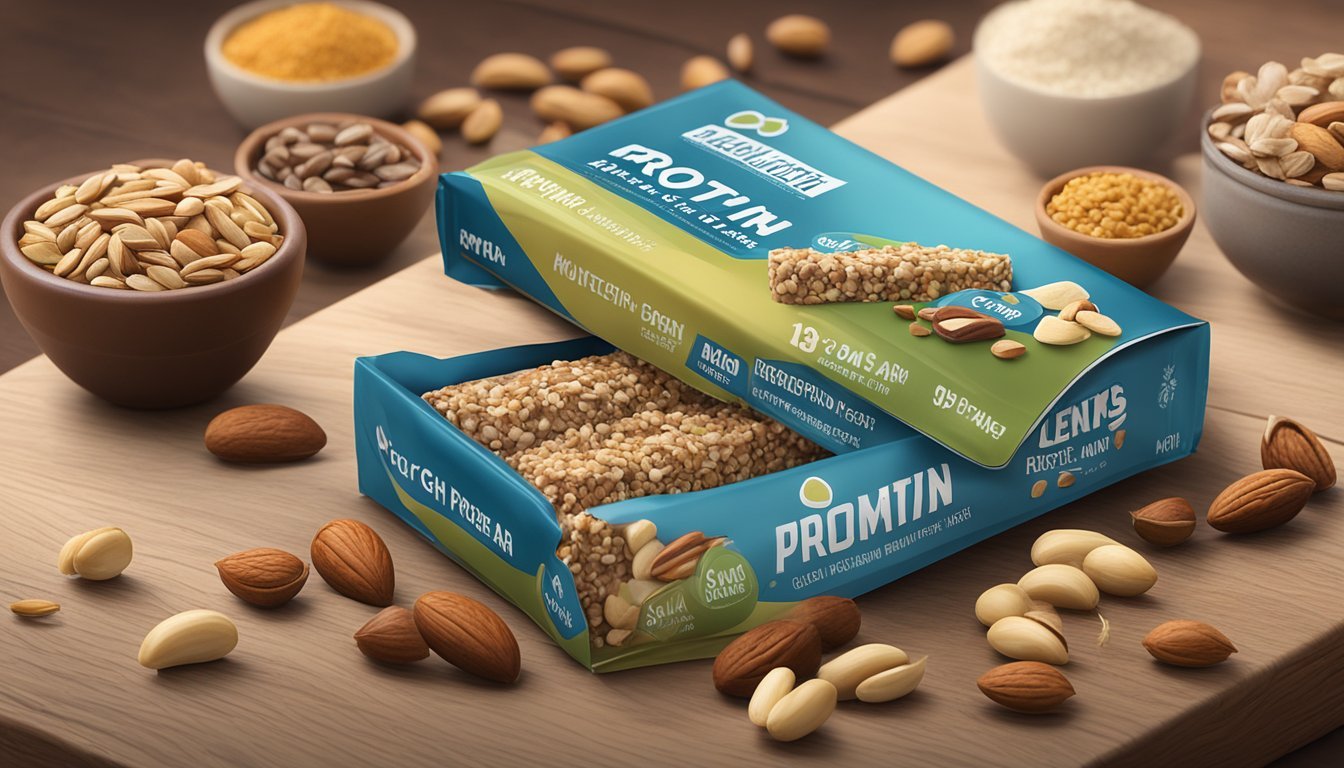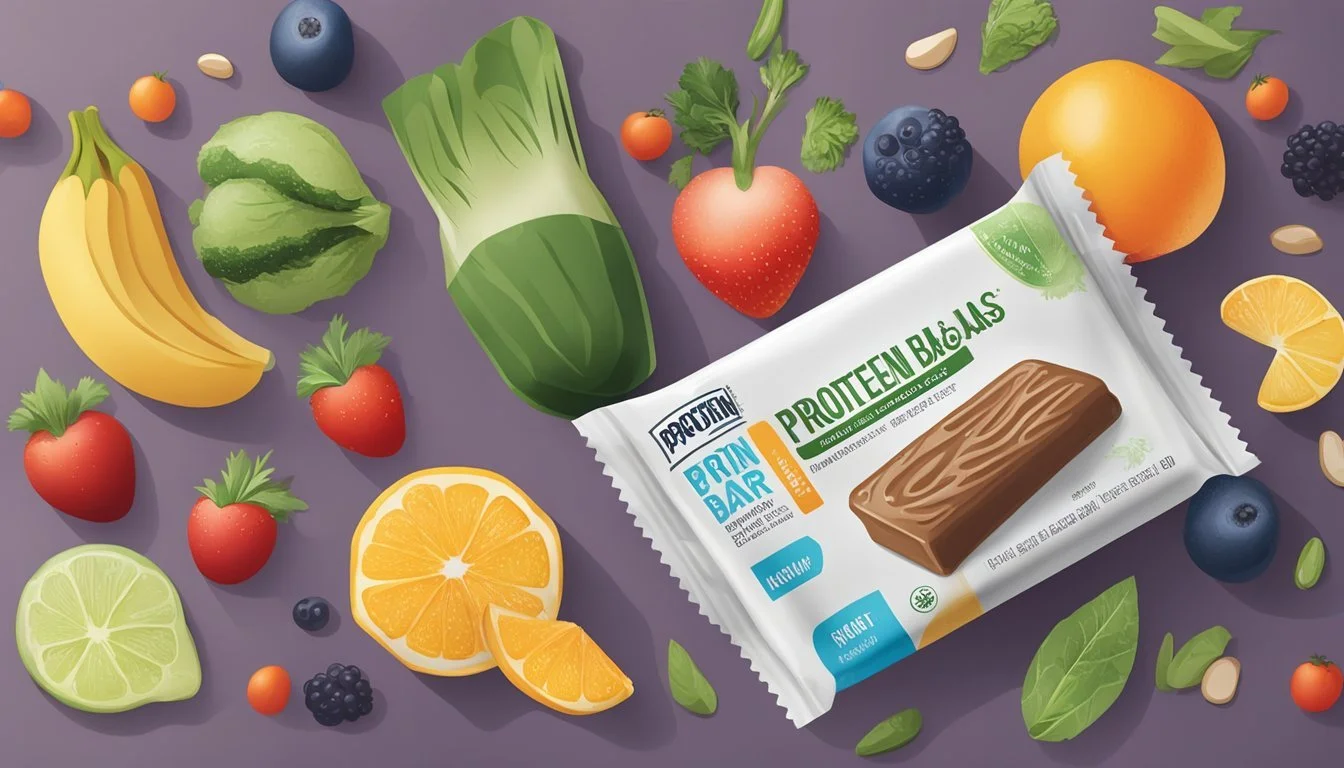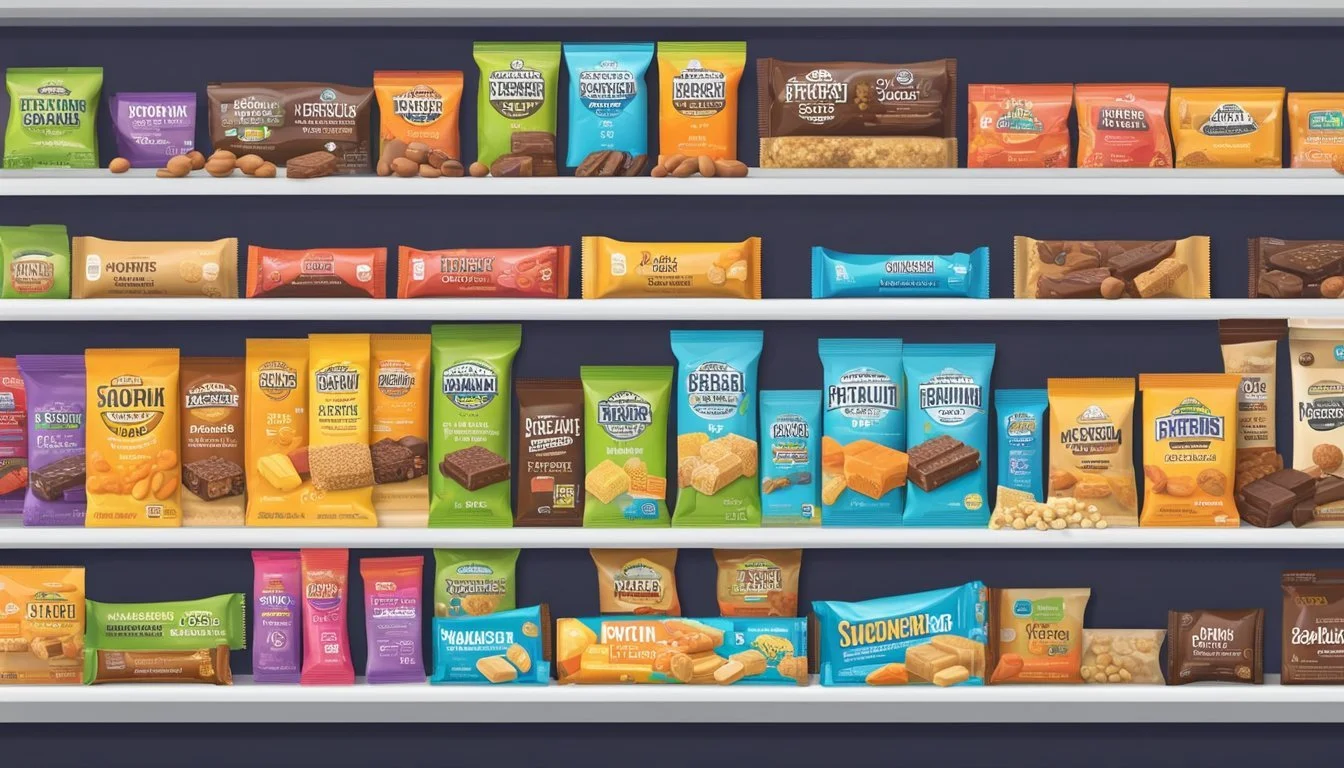Are Protein Bars a Healthy Snack or Just Processed Food in Disguise?
Examining Nutritional Value and Ingredients
Protein bars have become a staple in the aisles of grocery stores, gyms, and convenient shops, touted as the go-to snack for a quick protein fix. They're marketed as a healthy alternative to curb hunger, support muscle repair, and offer a convenient source of nutrients. With their high protein content, these bars are aimed at health-conscious individuals seeking a nutritious snack on the go. The appeal is clear: a portable package that promises to support diet and fitness goals appears to be an ideal solution for busy lifestyles.
However, the nutritional profile of protein bars is not consistent across the board, and some may not be as beneficial as their packaging suggests. While protein is an essential macronutrient for muscle repair and satiety, the source of the protein and the other ingredients included in the bars can significantly affect their overall health value. The balance between convenience and nutrition is sometimes tipped by high levels of added sugars, artificial additives, and calorie-dense compositions that bring into question their role in a healthy diet.
Before reaching for a protein bar, it's important to scrutinize the label, considering both the quantity and quality of protein provided as well as the presence of other ingredients. Not all protein bars are created equal, and the wide variance in their formulations means that some might serve more as a processed snack rather than a wholesome nutritional supplement. Consumers are encouraged to look beyond the branding and delve into the nutritional facts and ingredient lists to make informed decisions about incorporating protein bars into their diets.
Assessing Nutritional Value
When evaluating the healthiness of protein bars, one should consider the balance and sources of macronutrients and micronutrients they contain. This section outlines the specifics of nutritional content in protein bars.
Protein Content and Sources
Protein bars typically offer 10-30 grams of protein per serving, originating from sources such as whey, pea protein, and nuts. It is important for the protein to supply all essential amino acids for comprehensive nutritional benefit. Dietitians often recommend checking for complete protein sources, particularly for individuals using these bars as meal replacements.
Carbohydrates and Fiber
Carbohydrates in protein bars can range from low to high, including varying levels of fibers and sugars. Dietary fiber is beneficial, but added sugars and sugar alcohols should be minimized to avoid energy crashes and potential health issues. A good balance includes complex carbs for sustained energy and a decent amount of fiber to aid digestion.
Fat Content and Types
The fat content in a protein bar can come from healthy sources like nuts and seeds, providing necessary fatty acids. However, one should scrutinize the type of fat present, steering clear of high saturated fat content and trans fats, which contribute negatively to heart health.
Vitamins and Minerals
Many protein bars are fortified with vitamins and minerals like calcium and iron. These nutrients can help in meeting daily recommended intakes, but it's essential to check that they do not exceed the advisable limits, to avoid potential toxicity.
Understanding the Nutrition Label
Protein bars should have a transparent nutrition label outlining calories per serving and serving size. Detailed scrutiny of the label can reveal levels of protein, fat, fiber, vitamins, and minerals, helping consumers make informed decisions aligned with a well-balanced diet.
Comparing Protein Bars and Whole Foods
In comparison to whole foods, protein bars can be more processed and contain more calories and sugars per volume. Dietitians typically suggest that whole foods such as fruits, vegetables, lean meats, and whole grains are the best primary option for most nutrients, with protein bars acting as a convenient, but secondary, source.
Health and Dietary Considerations
When evaluating protein bars as healthy snacks (What wine goes well with snacks?), one must consider their nutritional profile, including sugar content, compatibility with various diets, and the presence of additives or fillers.
Sugar and Sweeteners
Protein bars can vary greatly in their sugar content. Added sugars and sweeteners like high-fructose corn syrup may be abundant in some bars, increasing calorie counts without adding nutritional value. Those looking to limit sugar intake should consider bars sweetened with stevia, xylitol, or erythritol—natural sweeteners that do not raise blood sugar levels as significantly as traditional sugar.
Sweetener Type Common in Protein Bars Considerations Added Sugars Yes Increase calorie content Stevia Yes Lower calorie, natural Xylitol Less common Natural, may affect digestion Erythritol Less common Natural, lower calorie
Diet-Specific Options
There are protein bars designed to meet the needs of various diets, including gluten-free, vegan, or keto. Those on a plant-based diet might seek out bars that use proteins derived from peas or brown rice. In contrast, individuals following a keto diet would prefer bars with high fat, moderate protein, and minimal carbs.
Gluten-Free: Look for certification labels to ensure the bars meet gluten-free standards.
Vegan: Ensure proteins are plant-based and no animal-derived ingredients are used.
Keto: Bars should have high fat, moderate protein, and low net carbs.
Additives and Fillers
Many protein bars contain fillers and flavors to enhance texture and taste. These can range from natural flavors to artificial additives. While some additives improve the bar's shelf-life, they can also detract from the whole food quality of the ingredients. Individuals should approach bars with a long list of unrecognizable ingredients cautiously, opting instead for those made with whole foods that provide nutrients without unnecessary extras.
Practical Usage of Protein Bars
Protein bars serve various roles from quick nourishment for busy individuals to energy support for athletes. They are often chosen for their convenience and specific nutritional content.
Meal Replacement Versus Snack
Protein bars vary greatly in their nutritional composition, making some suitable as meal replacements while others are better fit as snacks. Meal replacement bars typically contain a balanced mix of carbohydrates, fats, and proteins along with essential vitamins and minerals, reflecting a more complete meal. They can be beneficial for weight loss when used to manage calorie intake. Snack-sized protein bars, on the other hand, usually have fewer calories and may provide a quick protein boost to alleviate hunger between meals without significant calorie addition.
Convenience and Portability
The defining characteristic of protein bars is their convenience. They are pre-packaged, shelf-stable, and do not require preparation or refrigeration, making them an excellent choice for those who are traveling or short on time. They can fit easily into a purse, backpack, or briefcase, allowing individuals to maintain their diet and nutrition goals when they are away from home.
Athletes and Fitness Enthusiasts
For athletes and those engaging in regular physical activity, protein bars can be a strategic part of their diet. Consumed post-workout, a protein bar with an appropriate mix of proteins and carbohydrates can facilitate muscle recovery and contribute to the growth of muscle mass. They deliver essential amino acids which are vital for the repair and building of muscle tissues after strenuous activities. However, it's important to choose protein bars that cater to these needs, focusing on higher protein content and quality ingredients to maximize health benefits.
Consumer Guidance
When selecting a protein bar as a snack, consumers must navigate between nutritional benefits and processed ingredients. Focus on the bar's protein content, calorie count, and added sugars to ensure it aligns with your dietary goals.
Selecting the Right Protein Bar
It is crucial to examine the nutritional label for protein content and quality. The best protein bars offer a balance of protein and calories without excessive sugar. They should contain protein sources such as whey, casein, or plant-based options like pea or rice protein. Aim for bars that have at least 10 grams of protein and low levels of saturated fat.
Interpreting Marketing Claims
Be wary of marketing claims that may embellish the health benefits of protein bars. Phrases like "all-natural flavors" or "energy-boosting" are not regulated and don't necessarily equate to a healthy snack. Analyze ingredient lists for whole-food components and be cautious of terms that suggest a candy bar disguise. Many bars are high in sugar, which can counteract their nutritional value.
Consulting Nutrition Experts
For personalized advice, consult a dietitian who can recommend protein bars that cater to your specific nutritional needs. Experts can decode the ingredient list and suggest bars that contribute beneficially to your diet. This is especially important for those using protein bars as a meal replacement or to support athletic training, as different activities and goals may require different nutritional support.
The Broader Impact of Protein Bars
As protein bars rise in popularity for their convenience and nutritional claims, it's critical to examine not just their health effects, but their environmental footprint, economic impacts, and their role in shaping our dietary habits.
Environmental Considerations
Protein bars often rely on individual packaging, which contributes to plastic waste, although sustainable packaging options are emerging. The ingredients themselves, especially when sourced from plant-based or vegan components, tend to have a lower environmental impact than animal-based proteins. Manufacturers that emphasize sustainable practices, such as the use of organic and non-GMO ingredients, can support greater environmental stewardship.
Packaging Waste: Majority wrapped in single-use plastics.
Ingredients Source:
Increased use of plant-based proteins.
Some vegan friendly options.
Economic Aspects
The protein bar industry has seen significant growth, indicating a strong market demand for convenient snack options. This market sector is diversifying, offering products aimed at travel convenience, dietary supplements, and meal replacements, which can be financially accessible to a variety of consumers.
Market Growth: Rising popularity suggests economic viability.
Price Range:
Varies widely, accessible to different economic segments.
Influence on Dietary Habits
Protein bars can both benefit and detract from overall health. On one hand, they can supplement a well-balanced diet with additional protein, particularly for those with specific nutritional needs or busy lifestyles. On the other hand, excessive consumption, especially of bars high in sugar or saturated fats, may contribute to obesity and other health issues, potentially skewing dietary habits away from whole foods.
Diet Supplementation:
Can aid in meeting protein requirements.
Should complement, not replace, a balanced diet.
Potential Risks:
May lead to poor dietary choices if used excessively.
Could contribute to weight gain if not managed carefully.
Conclusion
Protein bars offer a convenient protein source for individuals seeking quick nutrition. The healthfulness of these bars depends on their ingredients and nutritional profile. Delivering amino acids, protein bars can support muscle repair and satiety between meals. However, they should complement, not replace, a diet grounded in whole foods.
They often contain a mix of protein, carbohydrates, fats, and fiber, with the ratio varying by brand and purpose. For an everyday snack, bars with lower calories and sugars and higher fiber content are preferable. Active individuals may require bars with higher protein and calorie content to meet their nutritional needs.
It's crucial to examine the ingredients list for:
Whole food components such as nuts, seeds, and oats.
Sugar content and sources, aiming for less added sugars.
The presence of artificial sweeteners and preservatives.
Nutritional value can be enhanced when nutrition bars are fortified with vitamins and minerals, making them a strategic snack choice for those with deficiencies.
In assessing health impact, moderation is key. They are a practical tool to manage hunger and fuel the body when whole food options are not accessible. Relying on them in excess can lead to an imbalance and inadvertently increase calorie intake, possibly contributing to weight gain.
People focused on health should prioritize balanced meals and consider protein bars as supplementary to a diverse diet, not as a standalone solution for nutrition.





